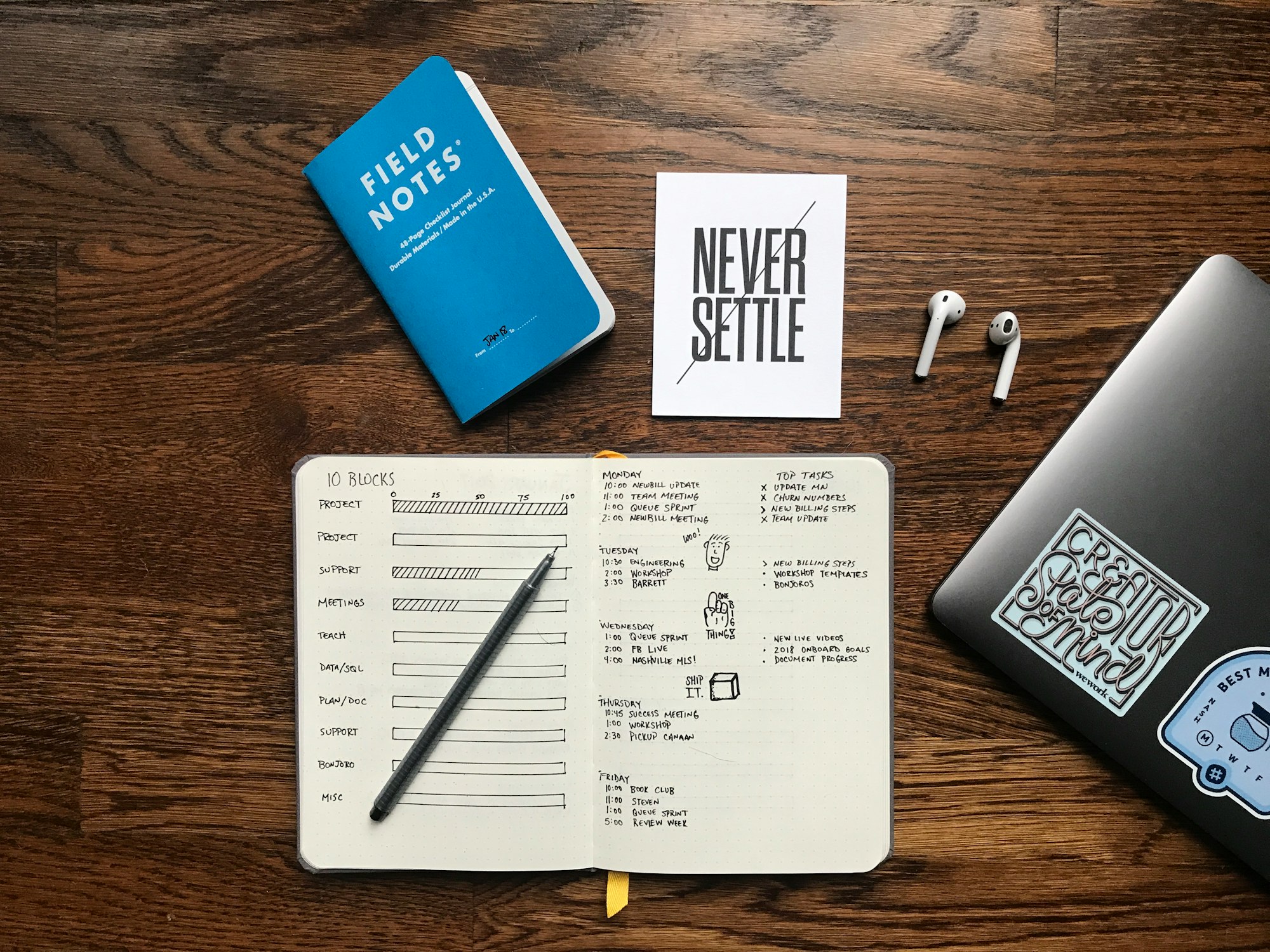Architecting Productivity: A Modular Approach to Getting Things Done
Weekly Ember 6

The Challenge
I talk a lot about structure, adaptability, and creating systems that work with your brain, not against it. But let’s be real—having multiple tools can feel like a mess if they aren’t integrated well. This week, I want to take you behind the curtain—to break down the actual tools I use daily (and situationally) and how they fit together into something functional.
What Wasn’t Working
- Relying on a single tool left gaps.
- Switching between systems felt disjointed.
- Manual tracking led to friction and loss of data.
The Shift: Finding the Right Balance

This isn’t about suggesting that these are the best tools or that you need to use them. It’s not a sales pitch, and it’s definitely not a sponsorship (nothing in this series is sponsored—nor is anything else I write). I’m small potatoes. I’m just ecstatic that even a handful of my friends are following along. These are simply the tools I’ve built my personal workflow around—each serving a specific role, rather than being an all-in-one solution.
I also recognize that most of these carry a price tag, often recurring. While I’ve found them worth the investment, I absolutely understand that cost is a factor, and my goal is to show how I use them—not to imply that they’re essential.
RISE Framework Application
Recognize
- Noticing where friction points were in my workflow.
- Identifying where a tool wasn’t fulfilling its role effectively.
Integrate
- Pairing the right tools for specific jobs instead of forcing one tool to do everything.
- Using automation to minimize effort in tracking and transitions.
Support
- Creating a structure where tools interact rather than compete.
- Implementing Tasker and Tiimo for seamless execution without mental load.
Engage
- Tracking time and progress without breaking focus.
- Building in flexibility to adapt as needed.
The Core System: Where Everything Lives

Some tools are daily drivers—the backbone of how I plan, track, and execute. This week, we’ll start with these core four:
- Bullet Journal → The analog root system for deep reflection and flexible capture.
- Todoist → Where actionable tasks and structured lists live.
- Obsidian → The knowledge base, tracking system, and long-term repository.
- Morgen → The scheduling and time-blocking layer that bridges tasks with actual time.
Each plays a different role, and together, they create a modular structure that adapts to my needs. We’ll start with an overview of these tools, then follow up with a deep dive into how they all interact—from idea to execution to review.
The Support System: Automation & Executive Function Boosts
Beyond the core system, I rely on tools that enhance execution without adding friction. These include:
- Goblin Tools → An on-demand assist for breaking down tasks when executive function is low.
- Tasker, Toggl Track, Tiimo → Automating workflow: when a task pops in Todoist, Tasker triggers automatic time tracking in Tiimo and Toggl, removing friction and keeping me focused.
These aren’t daily drivers but serve key roles when needed, and we’ll cover them in their own posts later this week.
Practical Implementation
1. First Steps
- Identify which tools fill a specific need rather than duplicating efforts.
- Set up automation to minimize effort in switching tasks.
2. Adjustments
- Where did friction still exist? Tweaking settings and workflows.
- Balancing structure vs. flexibility—when to let a tool adapt instead of forcing structure.
3. Results
- Streamlined workflow without unnecessary duplication.
- Automation handles repetitive processes, freeing up focus.
Key Takeaways

- A system works when each tool has a job—don’t force one tool to do everything.
- Automation isn’t about being fancy—it’s about reducing friction.
- Adjustability is key—what works now might need tweaking later.
- No tool is essential. It’s about what works for you.
What’s Next (And Where to Check Back)
This post will be updated as the supporting articles go live. If you want to follow the full breakdown, here’s the plan:
- Core Tools Overview (Bullet Journal, Todoist, Obsidian, Morgen)
- Deep Integration Breakdown (How they work together in my system)
- Goblin Tools Breakdown (How it steps in when I need extra support)
- Automation & Tracking (Tasker, Tiimo, and Toggl’s role in reducing friction)
Check back here for updates as they roll out.
Your Turn
What patterns do you notice in your own system? How might you adjust them to reduce friction? What support do you need?
This is less about which tools I use and more about how I build a system that works for me. If you’re looking for inspiration or ideas on building your own, I hope this series helps. Let’s get into it.
